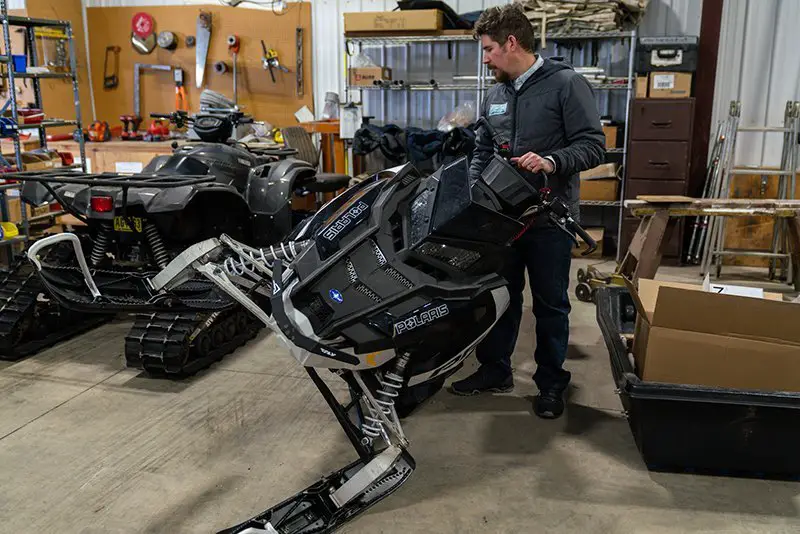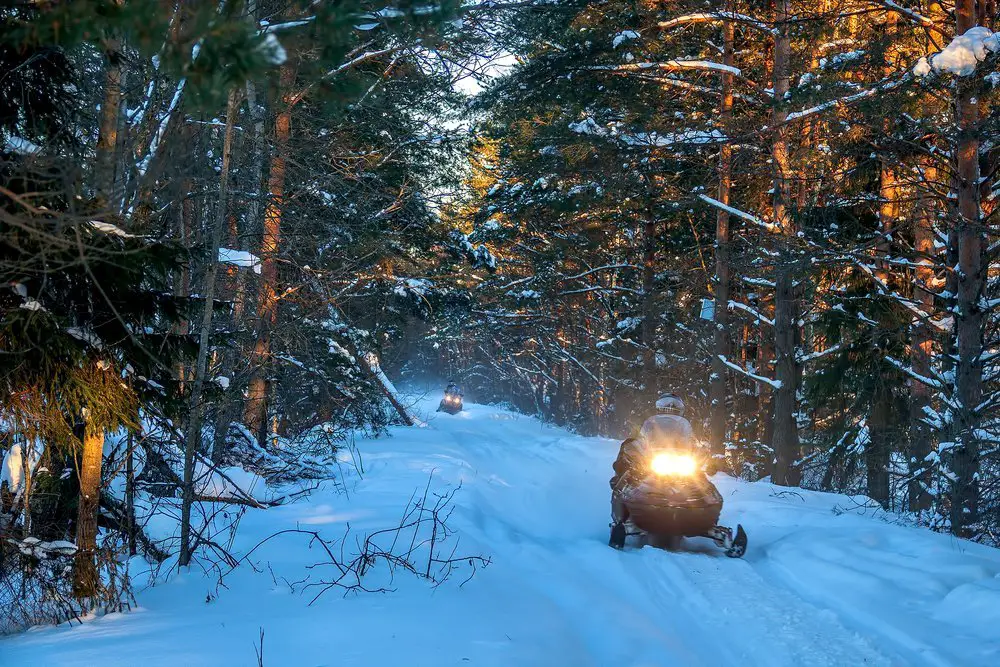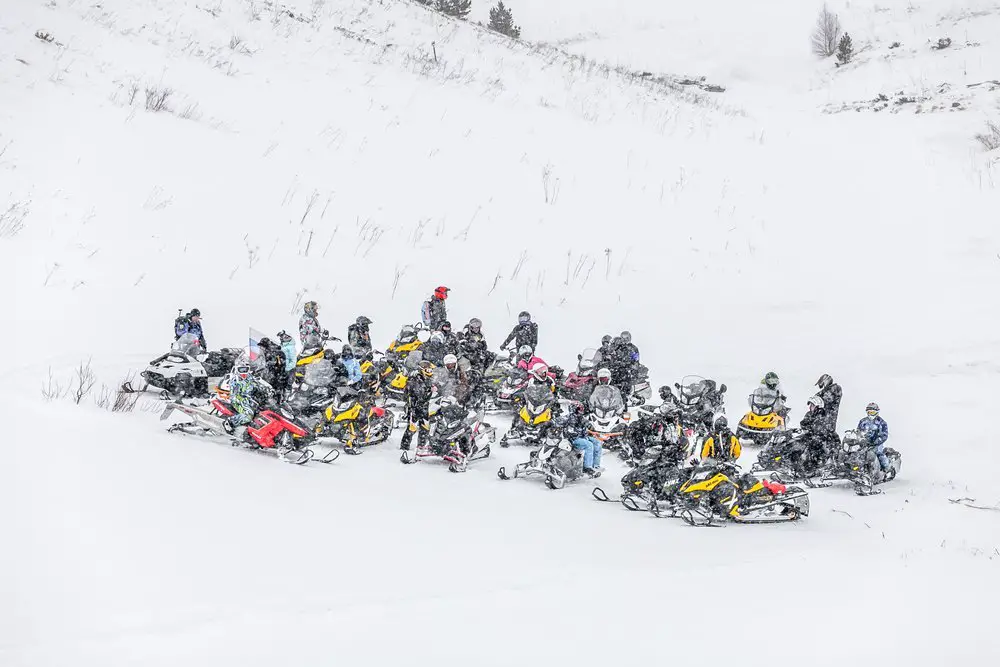If you are a little overwhelmed when it comes to snowmobile clutches, then you are not alone. At first, it can be difficult trying to figure out everything on your own.
I’ve been snowmobiling for over 20 years and there was still some information I spent hours researching before writing this article!
You can find information about snowmobile clutches online, but it’s often scattered all over the web and hard to find. That’s why, with my pre-existing knowledge and a lot of research, I’ve decided to create this handy resource on the topic.
So, let’s get into it!
Table of Contents
How long does a snowmobile clutch last?
Replacing your sleds clutch is pretty costly and can quickly become a headache. How you maintain itwill play a huge role in how much life you will get from it.
How long does a snowmobile clutch last? With proper maintenance, a snowmobile clutch will typically last between 5,000-10,000 miles before it needs repairs or replacement. If you don’t perform regular maintenance to your snowmobiles primary or secondary clutch, you can expect them to last between 3,000-5,000 miles before you run into issues.
Clean clutches are happy clutches, proper maintenance a few times every year is the best way to get the most longevity out of it.
I like to perform the following maintenance on my sled every year to keep my snowmobile running at peak performance:
- Complete cleaning
- Alignment check
- New bushings
- New pins
- New springs
Obviously, this is just my routine. If you inspect it at the beginning of the year and your bushings and pins look fine, you can get away with skipping those steps.
Besides a complete cleaning, I always recommend you get new springs at the start of every year, every other year maximum. This is because springs play a huge role in your snowmobile’s performance, and tend to fatigue over time. Plus, they are relatively cheap.
How to tell if your snowmobile clutch is bad

Your snowmobile’s clutch plays a key role in making sure your sled is running at optimal levels. A bad one can seriously damper the performance of your machine. Some indicators that it is already bad or in the process of going bad include:
- Drops in performance
- Audible noises
- Engine bogging down
- Backshifting issues
Let’s take a deeper look into a few different indicators.
Drop in performance
A tell-tale sign of a bad clutch is when your snowmobile starts operating at lower RPM than what is expected from your sled.
Audible noises
Noises coming from your clutch are not a good sign, in fact, if you are hearing noises it’s usually a sign that it is beyond repair.
Engine bogging
When you really hit the throttle hard and try to accelerate but your snowmobile bogs down, you should check your clutches to ensure they are moving freely. If one or both of your primary secondary clutches are binding, you may experience engine bogging.
Backshifting issues
An example of backshifting is when you’re taking your snowmobile up a hill, and are able to maintain RPM.
If you start to notice that your snowmobile is losing RPM while navigating steep terrain, there is a good chance you are having binding issues within your secondary.
Which tools are needed to rebuild a snowmobile clutch?
To rebuild a snowmobile clutch you need specific tools that will run you anywhere between $300-$600 depending on where you get them from.
In this chart, I will show you the tools you need to rebuild one and how much I spent on them.
From this, we gather that the total cost of a set of tools needed to rebuild your snowmobile clutch costs $521.11. Surely, you may be able to cut some costs by finding deals, but as discussed, you can expect to spend anywhere between $300-$600.
How to change snowmobile engagement

Lower engagement is usually best for mountain and trail riders who don’t really care much about how fast they get out of the gate, whereas racers who rely on being fast out of the gate require a higher engagement. So how do you achieve either of these tasks? Let’s take a look.
How to lower snowmobile engagement
I had this same issue, I was trying to lower the RPM before my clutch engages but couldn’t find the information on it anywhere to do it myself and was forced to take it to a shop to have it done. Luckily, I now know exactly what you need to do.
How do you lower your snowmobile’s clutch engagement? To lower the RPM at which your clutch engages, you need to replace your clutches primary spring with a softer spring that have less initial force. For example, if you currently run a spring that has 130 initial force, replacing it with a spring that has 100 initial force will drop your engagement by around 300 RPM.
For every drop of 10 in the initial force of your spring, it’s about a 100 RPM difference. So, if you dropped your spring from 130 initial force to 70 initial force, it would drop your engagement by about 600 RPM.
How to raise snowmobile engagement
People who enjoy racing snowmobiles will require higher engagement RPM to increase their starting speeds.
The best way to raise your snowmobile’s engagement RPM is by replacing your primary clutch spring with a stiffer spring that has a higher initial force. For example, if your clutch currently has a 160/320 spring, replacing it with a 230/320 would give you higher engagement.
What do snowmobile clutch weights do?
weights are a vital component that determines how well your sled runs.
Your clutch weight generates force that overcomes the force set by the primary spring in order to have the clutch engage and establish optimal RPM. In short, clutch weights help to adjust your acceleration as well as establish your peak RPM.
If you find your sled is over revving, you should put in heavier weights.
How do you clean snowmobile clutches?

Cleaning both your primary and secondary is essential to keep your sled running at optimal performance and will help long term avoiding possible damage.
What you need to clean your snowmobile’s clutches:
- Degreaser (I use castrol super clean)
- Common paper towels
- Hard scrubbing brush
- Scotch-brite pads (I use brown)
- Brake cleaner
- Compressed Air
To properly clean your snowmobile’s clutches, remove the belt from the sled. Wash the belt with hot water and soap to remove built up grime and residue. I prefer to run it through the dishwasher, once done hang it to dry.
Next, blow all loose dirt and dust off your clutches with a can of compressed air. Then, use your scotch-brite pads to clean the faces of your primary and secondary clutch sheaves. After you scrub them down with your scotch-brite pads, give them a once over with some break cleaner and wipe down with a paper towel until you no longer see grime, dirt or residue on the paper towel.
If you still notice residue on the sheaves, simply start over again until it’s all taken care of. Once you’re done, reinstall the belt, and you are good to go.
Important note: Any leftover brake cleaner can eat away at the rubber on your belt, if using brake cleaner ensure it is all removed before re-inserting your sleds belt. To avoid this entirely, you can use acetone instead.
They should be cleaned a few times each season to keep your machine running at peak performance.
Check out this video demonstration.
Should you lube a snowmobile clutch?
There is a common misconception floating around the sledding community about whether you should be using lube on your primary or not.
Fact is, your snowmobile’s clutch does not require you to lubricate it. This is because snowmobile clutches are designed to run without the use of lube. Avoid using things like WD-40 on your clutches, as they tend to attract dust and dirt, which will cause your clutch to underperform.
Why is my Snowmobile’s clutch sticking?
There are a number of things that can lead to your snowmobile’s clutch sticking, including worn or damaged pieces such as:
- Rollers
- Weights
- Weight bushings
- Main bushings
To troubleshoot the reason behind your snowmobile’s clutch sticking, perform the following steps:
- Inspect to see if your rollers have flat spots or too much play
- Check to see if your weights have grooves in them
- Once clean, check to see if your main bushing does not allow your movable sheave to move easily
If you’re lucky, and it’s just your weights that have grooves in them, they are easy to replace. However, if your rollers or main bushing are bad, you will likely need to take it apart and replace those pieces.
Tip: Before you go ripping your sled apart, try to blow all the dirt and grime off with some compressed air. Sometimes that’s enough to solve your issue.
Can you start a snowmobile without a clutch?
An interesting question I’ve been asked a few times is whether you are able to, or if you should even attempt to start your snowmobile without a clutch.
The answer is, you can start your snowmobile without a clutch. However, your engine may be harder to start without the primary clutch in, especially if your engine is cold.
People have said that you can damage bearings if you attempt to run your sled’s engine without the primary clutch, and it’s simply not true. Your bearings will fail via incorrect install, lubrication, flaking etc. Not because you pulled your engine over without the clutch.
If you do start your snowmobile without a one installed, just avoid hitting the gas, as this can lead to over revving the engine.
How hot do snowmobile clutches get?
Your snowmobile’s primary and secondary clutches should always be cool to lukewarm. They should never be too hot to touch, and if they are, something is wrong.
References
https://adventure.howstuffworks.com/outdoor-activities/snow-sports/snowmobile1.htm
https://www.snowmobile.com/blog/2017/01/snowmobile-cvt-drives.html




